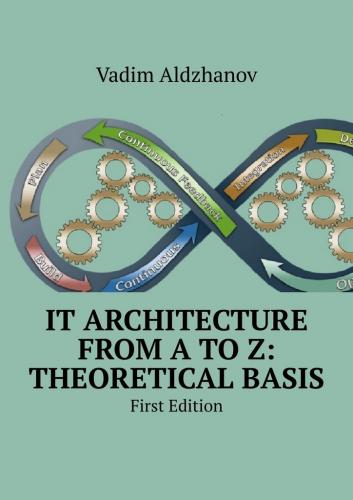• Identification of project stakeholders;
• Communication planning;
•Spread of information;
• Stakeholder expectations management;
• Performance reports.
The information is distributed through the following channels:
• Project manager – project commission, head of enterprise. Project reports, costs, trend analysis of milestones and costs, causes of deviations.
• Project team – project manager. The team reports on the work done and challenges. The project manager provides the team with information on further actions and decisions that affect their work.
• Users, product consumers – project manager. Information on the project development.
• Project manager – project plan. Plans are constantly monitored, since this is the basis of project controlling.
• Project team – heads of functional units. In the case of a functional organization of the company the owner of the resource must control his/her employees in terms of competence, knowledge, motivation, and project distribution.
Project Risk Management
Project risk management is understood as risk management planning, identifying and analyzing risks, developing risk response methods, controlling, monitoring and managing risks during project implementation. Using project risk management, project managers achieve increasing the likelihood of the occurrence and impact of favorable events on the project and reducing the likelihood of the occurrence and impact of adverse events on the project when executing project. The project risk management diagram includes:
• Risk management planning,
• Identification of risks
• Qualitative risk analysis,
• Quantitative risk analysis,
• Planning to respond to known risks
• Monitoring and risk management.
Project Procurement Management
Project procurement management includes the purchase or acquisition of certain required entities (products, services, results, documents) produced by external organizations in relation to the one in which the project is implemented. The organization carrying out the project, can act as a buyer or seller of these entities. In addition, the project’s procurement management include the contract and change management sub-processes required to develop and maintain contracts or purchase orders. Thanks to the project supply management processes, administering all purchase contracts during the project and managing the contractual obligations assigned to the project team are possible. The project supply management diagram includes:
• Procurement planning,
• Procurement,
• Procurement management,
• Procurement closure.
Project Stakeholder Management
Managing project stakeholder’s expectations is understood as communication between the project team and stakeholders, as well as work aimed at meeting their needs and solving emerging problems that may entail changes in the project. Property building up relationships between all stakeholders on a project allows the project manager to increase the likelihood of success.
PROJECT MANAGEMENT METHODS AND TECHNIQUES
The PMI methodology describes various tools and techniques, the practical application of which allows the project manager to increase the efficiency of project execution, anticipate risks, calculate optimal project routes, assess the situation sensibly and make the right decision from the start, etc. These tools and techniques exist on their own and have long been used in various areas of human activity. The following is a list of basic methods and techniques applicable to specific processes.
Decision Tree Analysis
Decision Tree Analysis is a method describing decision making by considering alternatives and the consequences of their choice. This method is used if predicted scenarios and results of actions are probabilistic. Decision Tree Analysis is displayed as a chart and reflects the probabilities and magnitudes of costs, the benefits of each logical chain of events and future decisions, and uses an analysis of the expected monetary value to determine the relative cost of alternative actions.
Diagram: “Decision Tree Analysis”
When forming a tree, the following four types of graphic symbols are used:
• Squares – decision places.
• Circles – the places where the outcomes appear.
• Dotted lines – possible solutions.
• Triangles or straight lines – possible outcomes.
Expected Monetary Value (EMV) for each alternative should be estimated. It mostly consists of the sums of the winnings estimates to be multiplied by the likelihood of the winnings realization, for all possible options.
SWOT Analysis
Strengths Weakness Opportunities Threats (SWOT) Analysis is a method for evaluating the internal and external factors affecting the development of a company. It will help assess the strengths and weaknesses of your business, find new opportunities and identify possible threats. SWOT analysis divides the influence factors into four categories, identifying company’s strengths, weaknesses, opportunities and threats:
•S-strengths (the sale of goods directly to the buyer, the profit is greater than that of competitors, customer service is the best on the market, etc.);
•W-weaknesses (insufficient partners, ineffective advertising, small target audience);
•O-opportunities (potential customers will find out everything they need about your product from the Internet, purchases are made 24 hours a day, regardless of whether you work or not);
•T-threats (your competitors’ brand is better known in the market, the quality of products offered by competitors is higher).
SWOT analysis is often used in strategic planning. It can start any action of the company, such as the study of new initiatives, new development strategies, and possible changes. Internal factors are strengths and weaknesses relating to internal factors, which can be easily evaluated:
• Financial resources (financing, income opportunities);
• Physical resources (your equipment, buildings, location);
• HR (employees, sometimes volunteers, target audience);
• Access to natural resources, copyrights, patents;
• Current processes (all events taking place in the company, motivational programs, training programs, a system of departmental hierarchy, etc.)
Answer the following questions in order to find the strengths of your business:
• What are the benefits of your business?
• What are you doing better than everyone else is?
• What are your strengths seen by your customers?
• What is your Unique Selling Proposition (USP)?
• How can you increase your profits?
Consider your strengths from your point of view and from your clients’ point of view. Assess your strengths relative to competitors. External factors – the influence of external circumstances on each organization and individual person is very strong. External factors are, as a rule, the circumstances
